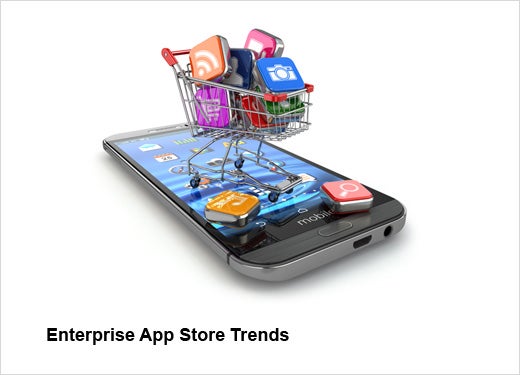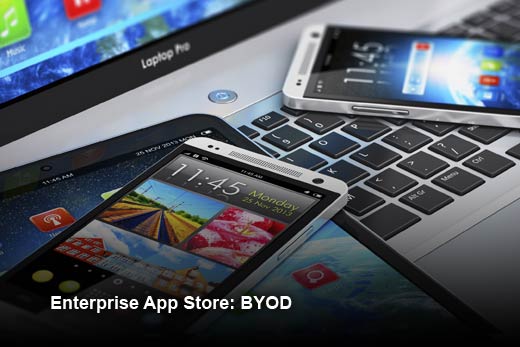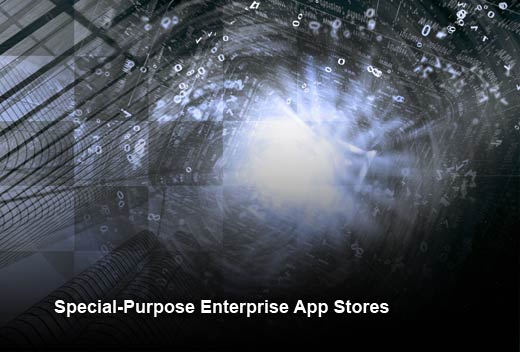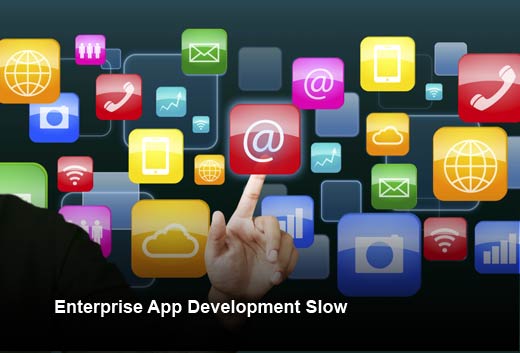The line between enterprise app stores and consumer app stores is not cut and dried. For instance, consumer app stores carry enterprise apps that are used in business, and have areas cordoned off for business.
For the most part, however, enterprise app stores have their own identity. Consumer app stores are notoriously porous. Organizations have far tighter control in their own app marketplaces. This is but one of the many advantages offered by enterprise app stores. This slideshow touches on the big issues affecting the enterprise application store sector.
Carl Weinschenk covers telecom for IT Business Edge. He writes about wireless technology, disaster recovery/business continuity, cellular services, the Internet of Things, machine-to-machine communications and other emerging technologies and platforms. He also covers net neutrality and related regulatory issues. Weinschenk has written about the phone companies, cable operators and related companies for decades and is senior editor of Broadband Technology Report. He can be reached at cweinsch@optonline.net and via twitter at @DailyMusicBrk.
Enterprise App Store Trends
Click through for trends that are affecting the enterprise app store sector.
Enterprise App Store: Choices
Getting the right software into the hands, or, more importantly, the devices, of employees is vital. Lifehacker offers three main choices for enterprise application store models: enterprise app stores, corporate portals and direct link downloads.
The enterprise app store is best for organizations with many purpose-built apps specialized for employees, vendors and other related people. Corporate portals are best when employees already have access to a secured corporate site. Direct link downloads are optimal when the number of apps used in the work environment is minimal.
Enterprise App Store: BYOD
Bring your own device (BYOD) work structures are among the most fundamental changes to enterprises communication. A main concern is security; personal phones and apps bought at consumer stores can be rife with malware and viruses. It is incumbent upon security staff to find ways to protect the company.
Enterprise app stores and containerization can be a good option, according to Computer Business Review Online. The idea is simple: An enterprise app store and containerized end device can protect the organization, even if the rest of the device is at risk.
Enterprise App Store: Easier Licensing, Distribution
Getting apps to employees’ phones is a tricky business. Organizations that are BYOD-based or that use more than one operating system (OS) add a layer of complexity for IT and security teams. If the app is necessary and more than one OS is supported, more than one version of the same app must be offered. An enterprise app store can help simplify this potentially confusing scenario by asking which OS is being used, handling the licensing tasks, and downloading the app to the user’s device.
Enterprise App Store: Help with Customizing Apps
Cortado Mobile Solutions and 10 app developers have launched the Mobile Business Alliance. The enterprise market helps companies find the apps that best suit their needs among its members.
The unique element of the marketplace is that developers are available to help organizations build apps from scratch or to tweak existing templates to help them create products that fit their needs.
Enterprise App Store: Vendor Federations
Enterprise application stores are moving to the next level. Cloud28+ — what IT World describes as a “federation of independent software vendors, resellers and service providers” led by HPE — is up to 225 members.
The federation plans to go online this summer. One of the federation’s first planned steps is the App Onboarding Center, which will containerize workloads from enterprise app store vendors and test them for compatibility. The service will be free initially.
Enterprise App Store: No Code/Low Code
The rise of “low code” and “no code” approaches, or the ability to create applications with little or no coding experience, is complicating things in the enterprise. Suddenly, non-technical employees can create and change applications.
This is affecting enterprise app stores. In essence, bring your own device (BYOD) has led to bring your own application and build your own application (BYOA), and the fruits of these various employee empowerment changes are on view at enterprise app stores, according to Forbes.
Enterprise App Store: Software Security Still an Issue
Security is an issue for enterprise app stores. One example: Research from Check Point Software found a weakness in Apple’s mobile device management (MDM) software.
A backdoor exists in enterprise app stores that allows those registered with Apple’s enterprise developer program to trick victims into installing applications that allow them to change enterprise policy settings. This potentially gives them access to “nearly every aspect of their phone’s settings,” according to Ars Technica.
Special-Purpose Enterprise App Stores
Enterprise app stores can be used for special purposes. For instance, HPE initially introduced an app store in support of software-defined networks (SDNs) in 2014. Last year, according to Aruba, the HPE SDN app store was redesigned to be more accessible and easier to use.
The idea, writes Ayu Shah at Cloud Tech, is to have a place to go for turnkey applications: “An example of this would be the HPE Network Optimizer, which uses SDN and OpenFlow to automate the QoS policies for unified communications applications for enhanced user experience.”
Combining, Managing Cross-Vendor Enterprise Apps
Work apps can be confusing. Flock, an enterprise messaging app, has rolled out an app store that integrates a number of apps and services, including Trello, Github, Twitter, Jira, Bitbucket, according to AppsTechNews.
CEO Bhavin Turakhia says that the store makes Flock “incredibly powerful.” The app store allows the various work apps and services to leverage their individual strengths and, in essence, become a meta-app able to provide a multitude of alerts, messaging and collaboration tools.
Enterprise App Development Slow
Organizations need to develop apps to put on the cyber shelves of their app stores. Development, however, may not be as healthy as some people assume.
Gartner found that 42 percent of organizations surveyed said that they intend to increase spending on mobile app development by an average of 31 percent this year, according to a report from Economic Times.
That’s the good news. The bad news is that the analysts found that the overall percentage of budgets aimed at mobile app development is down 2 percent, to 10 percent, since 2015.













